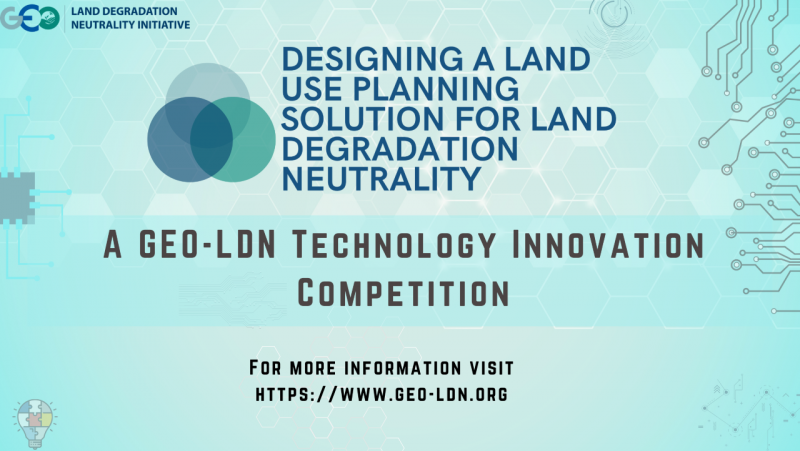
Competition to Design a Land-use Planning Software for Land Degradation Neutrality
An international technology competition to design software that can support well-informed land use decisions is launched today by the Group on Earth Observation Land Degradation Neutrality (GEO-LDN) Initiative.
As reported by the Intergovernmental Panel on Climate Change, up to 70% of the Earth’s ice-free land has already been transformed from its natural state, mainly to meet the demand for food, raw materials and human settlements. “As the pace of land conversion continues to rise, we need to shift the focus of land conservation efforts to the point when land use decisions are made, so that the trade-offs from competing demands for limited land resources can be navigated successfully,” says the UNCCD Lead Scientist Dr. Barron Orr.
Land Degradation Neutrality (LDN) is a unique approach that balances the expected loss of productive land with the recovery of already degraded areas. LDN strategically places its three pillars of conservation, sustainable land management and restoration in the context of land use planning. Today, over 120 countries have committed to set national voluntary LDN targets. However, as reported by the UNCCD Science-Policy Interface (SPI), limited national progress is evident when it comes to establishing effective integrated land use planning systems and embedding a neutrality mechanism into them.
Recognizing the importance of filling this critical gap, UNCCD country Parties tasked the SPI with the development of a demonstration, resulting from an open call, of how LDN can be incorporated into existing open source land use planning and trade-off analysis tools. To address this mandate, the GEO-LDN Initiative and the SPI are launching a competition.
The challenge is to develop a software that can support the implementation of a “neutrality mechanism” within a well-established open source model. “This no-net-loss land use planning module would help users to map anticipated future impacts of land use decisions for a given area. A planner would be able to generate a scenario where all expected losses of productive land can be counterbalanced with planned gains for each land type,” explains Dr. Orr.
The purpose of the competition is to inspire innovation and collective action towards LDN. Eligible participants include teams composed of at least one technical implementer and at least one end-user, such as a local government institution involved in territorial planning, a civil society organization engaged in sustainable land management or an indigenous community fighting against land degradation and land take. Winning solutions will be promoted by the GEO-LDN Initiative and the UNCCD for use by countries who are setting voluntary LDN targets to monitor and report on SDG Indicator 15.3.1 “Proportion of land that is degraded over total land area.” The winning team will receive financial and technical support valued at 100,000 USD to transform their prototype into an operational and scalable tool.
For more information, please visit the competition website.